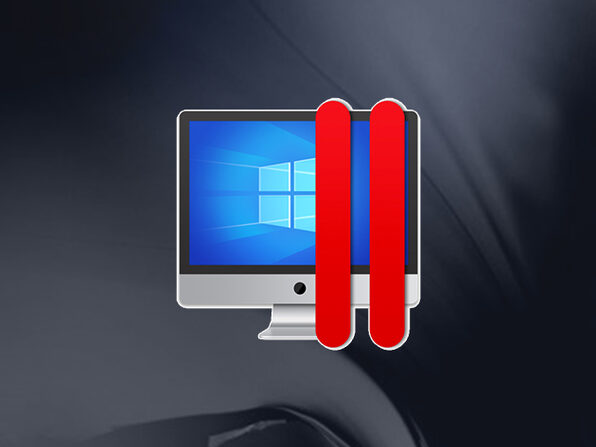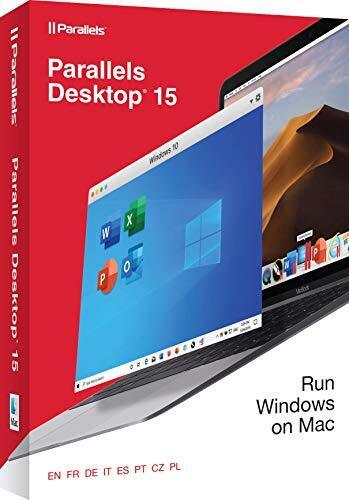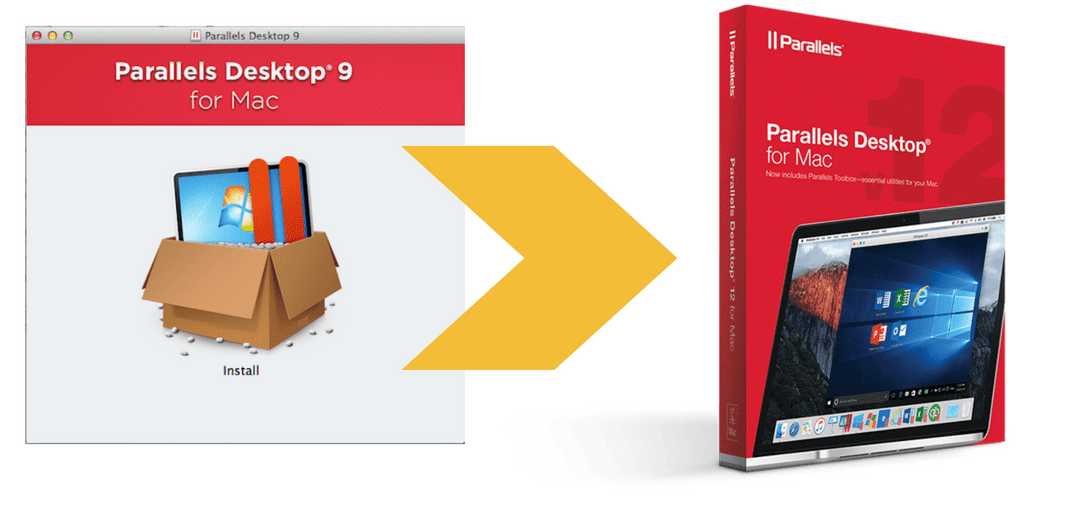

System Requirements for Parallels Desktop 16
Parallels Desktop for Mac (v. 13) - box pack - 1 user overview and full product specs on CNET. Mac OS X Snow Leopard Server 10.6.x; Mac OS X Leopard Server 10.5.x; and many more. — Only the version downloaded with help of the Installation Assistant with Parallels Desktop. — Parallels Tools are not available for this operating system. Hide all supported guest operating systems; See all supported guest operating systems. Parallels Remote Application Server; Parallels Desktop for Mac Business Edition; Parallels Desktop for Mac Pro Edition; Parallels Mac Management for SCCM; Parallels Desktop for Mac; Parallels Toolbox for Mac & Windows; Parallels Access. May 22, 2020 Parallels Desktop 8 for Mac. The latest update of Parallels Desktop 8 for Mac does support OS X Mavericks (excluding OS X 10.9.5) and is available to address the majority OS X Mavericks compatibility issues. There are some known issues such as USB devices assignment, limited multiple displays support. OS X: Yosemite 10.10.5 CPU: 15” MacBook Pro Retina 2.6GHz processor, 16 GB of RAM Parallels Desktop for Mac running Windows 10 with two processors with 8192 MB of memory allocated as seen below.
Supported Mac Configurations
| Minimum To run most applications such as Microsoft Office, accounting, trading, SAP, Matlab, and more. | Best Performance For graphics-intensive applications, high loads, and running multiple virtual machines. | |
|---|---|---|
| Processor | Intel Core 2 Duo, Core i3, Core i5, Core i7, Core i9, Intel Core M or Xeon processor | Intel Core i5, Core i7, Core i9 or Xeon processor |
| Memory | 4 GB of RAM | 16 GB of RAM or more |
| Storage | 500 MB for Parallels Desktop application installation Additional disk space for the guest operating system (at least 16 GB is required for Windows 10) | SSD drive |
| Graphics | Intel, AMD Radeon or NVIDIA | AMD Radeon Pro graphics card |
| Operating System | macOS Big Sur 11.0 (when released) macOS Catalina 10.15.5 or newer macOS Mojave 10.14.6 or newer macOS High Sierra 10.13.6 or newer | macOS Big Sur 11.0 (when released) DirectX 11 requires at least macOS Mojave 10.14, but works best on macOS 10.15.5 Catalina or newer. |
| Interested in support of Macs with Apple M1 chip? Subscribe to news here. | ||
| Internet connection is required for product activation, updates and select features. | ||
Parallels For Mac 10.10.5 Download

Guest Operating Systems
- Windows 10
- Windows 8.1
- Windows 8
- Windows Server 2019
- Windows Server 2016
- Windows Server 2012 R2
- Windows 7 (SP0-SP1)
- Windows Server 2008 R2 (SP0-SP2)
- Windows Vista Home, Business, Ultimate and Enterprise (SP0-SP2)
- Windows Server 2003 R2 (SP0-SP2)
- Windows XP (SP0-SP3)
- Windows 2000 Professional SP4
- Windows 2000 Server SP4
- Boot2Docker
- Red Hat Enterprise Linux (RHEL) 8,7 and 6
- CentOS Linux 8, 7, 6
- Fedora Linux 32, 31
- Ubuntu 20.04, 19.04, 18.04 LTS, 16.04 LTS
- Debian GNU/Linux 10, 9
- Suse Linux Enterprise 15
- OpenSUSE Linux 15.2, 15.1, 15
- Linux Mint 20, 19, 18
- Kali 2020.2, 2019, 2018
- Elementary OS 5
- Manjaro 18
- Mageia 7
- Gentoo Linux **
- Solaris 11, 10 **
- openBSD 6 **
- FreeBSD 12, 11 **
- openVZ 7
- eComStation 2, 1.2 **
- ReactOS 0.4 **
- Android OS *
- macOS Big Sur 11.0 (when released)
- macOS Catalina 10.15
- macOS Mojave 10.14.x
- macOS High Sierra 10.13.x
- macOS Sierra 10.12.x
- OS X El Capitan 10.11.x
- OS X Yosemite 10.10.x
- OS X Mavericks 10.9.x
- OS X Mountain Lion 10.8.x
- OS X Lion 10.7.x
- OS X Lion Server 10.7.x
- Mac OS X Snow Leopard Server 10.6.x
- Mac OS X Leopard Server 10.5.x
- and many more...
- * — Only the version downloaded with help of the Installation Assistant with Parallels Desktop.
** — Parallels Tools are not available for this operating system.

Note: Parallels Desktop for Mac emulates PC hardware, so operating systems that are not present in this list can work as well. You can download the Parallels Desktop trial and install an operating system of your choice. If it doesn't work and you believe it should be supported, let us know at Parallels Forum.
Parallels Tools for Linux require X Window System version 1.15-1.20 and Linux Kernel version 2.6.29-5.1.
Parallels For Mac Support
Moving Your PC?

PC system requirements to move your PC to your Mac (using Parallels Transporter Agent):
- 700 MHz (or higher) x86 or x64 processor (Intel or AMD)
- 256 MB of RAM
- 50 MB of available hard disk space for installation of Parallels Transporter Agent
- Ethernet or WiFi network adapter for migrating over network
- External USB drive for migrating via external disk
- Supported Windows: Windows 10, Windows 8.1, Windows 7, Windows Vista, Windows XP, Windows Server 2003 and Windows 2000 *
- * — To migrate Windows Vista or older, Transporter Agent from Parallels Desktop 13 should be used. Download the Parallels Transporter Agent.
Parallels Desktop is a program that allows the user to install a “guest” operating system on your computer. For example, on my work desktop I use it to run Windows 10 and Ubuntu (a version on Linux). The convenient thing about PD is that I can run both those operating systems and the native Mac OS all at the same time and switch between them just as I’d switch between Safari and Mail. This is quite useful since it lets me test my lessons on all three platforms and see what inconsistencies students might experience when they take those lessons to our various labs or their homes. When I bring Ubuntu to the front I am running Ubuntu as if I were sitting at a computer with only Ubuntu installed. (Except for the extra features that exist like the ability to copy something from inside Ubuntu and paste it into my Mac word processor.)
Microsoft makes versions of Office for the Mac and Windows and they are virtually identical. I have to say virtually because there are some differences between the two versions of Excel that heavy users of macros might see. The average user isn’t likely to see any difference other than the fact that Access (the database program) is Windows only. So my first question is: do you really need the Windows version of Office? Working in a mixed environment in academia, I have no trouble sharing files with my colleagues as a Mac users. The fact that the file formats are exactly the same, I can open a Word document on my Mac that was created on a Windows machine and see what the Windows user created. (Formatting issues such as different pagination may exist but these are issues that can also crop up between two Windows users since they may not be using exactly the same fonts.)
If you have both the Windows and Mac version of Word installed on your computer which version opens the file isn’t determined by where the file is stored. It depends on the context in which it is clicked. In general, if you click on the file in the Mac Finder it will open in the Mac version and if you click on it in the Windows Explorer it will open in the Windows version. But things can get a little confusing - if I have Word running in PD but I don’t have the Mac version of Word running and I double click it will open in the Windows version. And finally on the Mac side you can explicitly set which version of Word will open the document when you double-click a file.
Sep 25, 2015 8:19 AM